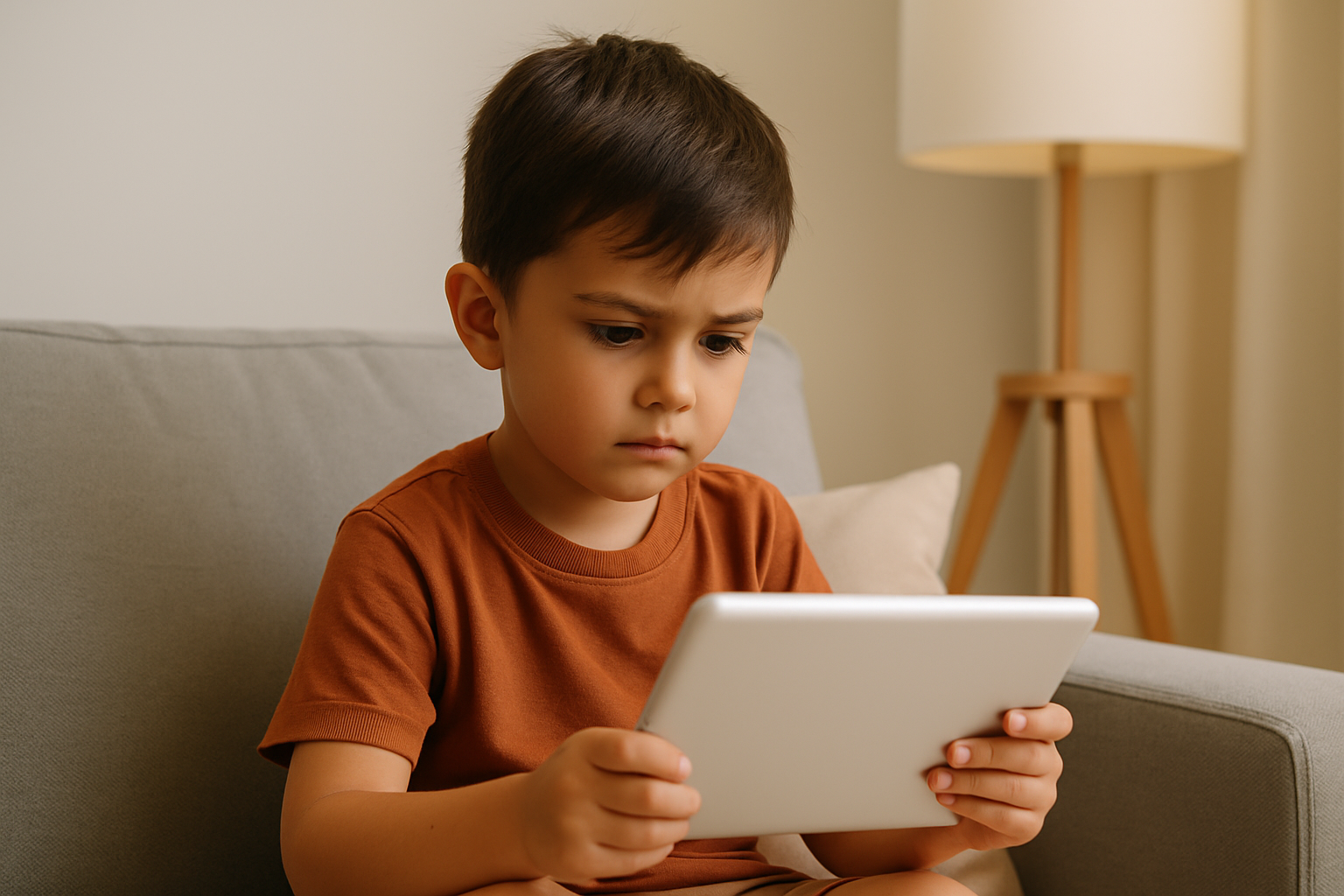Screens and Young Eyes: A Parent's Guide to Protecting Children's Vision
Published on: 2025-07-30
In today’s screen-centric world, children are constantly exposed to digital devices- smartphones, tablets, laptops, televisions, and even interactive toys. While technology enhances education and entertainment, it also presents new challenges for children’s eye health.
At Malabar Maxivision Eye Hospital, we deliver best eye care services because we believe every parent deserves clear, reliable guidance on how to protect their child’s vision from the effects of excessive screen time.
The Rise in Screen Time Among Children
Recent studies reveal that children aged 8–12 spend approximately 4 to 6 hours daily on screens, while teenagers average more than 7 hours a day. This dramatic increase—especially post-pandemic—has raised alarms among eye care specialists worldwide.
While digital tools can support creativity and learning, excessive and improper use (such as prolonged focus, bad posture, or reduced blinking) may negatively impact visual development.
Common Eye Problems Caused by Screen Time
1. Digital Eye Strain (Computer Vision Syndrome)
Children often experience symptoms such as:
- Blurry vision
- Headaches
- Eye fatigue
- Watery or dry eyes
- Neck and shoulder pain
Unlike adults, children may not ex

press discomfort verbally. Instead, they may squint, rub their eyes, or avoid using screens altogether.
2. Dry Eyes
Prolonged screen use can reduce blinking by up to 60%, diminishing the protective tear film and leading to redness, irritation, and a gritty sensation.
3. Myopia (Nearsightedness)
The global incidence of childhood myopia is on the rise. Studies have linked excessive screen time and lack of outdoor play to early onset of nearsightedness, which may lead to serious vision complications later in life.
4. Sleep Disruption
The blue light emitted from digital devices can suppress melatonin—the hormone that regulates sleep. This can delay bedtime, affect sleep quality, and impact a child’s mood, energy, and academic performance.
Signs Your Child Might Be Experiencing Eye Strain
Watch for the following behaviors or symptoms:
- Sitting too close to screens
- Tilting the head or squinting
- Frequent headaches
- Avoiding reading or screen-based tasks
- Rubbing eyes often
- Difficulty focusing on moving objects or while reading
Expert-Recommended Tips to Protect Kids’ Eye Health
At Malabar Maxivision Eye Hospital, we recommend these proven strategies to support your child’s visual well-being because they deserve best eye care services.
1. Follow the 20-20-20 Rule
Every 20 minutes, make your child to look 20 feet away for at least 20 seconds. This relaxes eye muscles and reduces digital fatigue.
2. Ensure Proper Lighting
Use balanced lighting to avoid harsh contrasts between the screen and surroundings. Adjust the screen brightness to align minimal glare.
3. Maintain Safe Viewing Distance
Keep screens at least an arm’s length away. For handheld devices, maintain a 16–18 inch distance from the eyes.
4. Prioritize Outdoor Play
Aim for at least 1–2 hours of outdoor time each day. Exposure to natural sunlight promotes healthy eye development and can reduce the risk of myopia.
5. Set Screen Time Limits
- Under 2 years: No screen time
- Ages 2–5: Maximum of 1 hour/day
- Ages 6 and up: Limit to 2 hours of recreational screen use
6. Use Blue Light Filters
Enable night mode or install blue light filters on devices to reduce exposure, particularly during evening hours.
7. Teach Good Screen Habits
Encourage your kids to blink often, sit upright, and take compulsory intervals. Developing mindful screen behavior early creates lasting habits.
When to Schedule an Eye Exam
Routine eye checkups are crucial, even in the absence of symptoms. Recommended schedule:
- 6 months: First comprehensive eye exam
- 3 years: Second checkup
- Before school begins: Third checkup
- Every year: Annual exams after school age
For children wearing glasses or with a family history of eye issues, frequent follow-ups are essential.
Why Choose Malabar Maxivision Eye Hospital?
As a leader in pediatric eye care, we provide:
- Full-scope eye exams for children of all ages
- Detection of refractive errors and coordination issues
- Early myopia control strategies
- Treatment for digital eye strain and dry eye syndrome
- A child-friendly atmosphere that ensures comfort during every visit
- And moreover the best eye care professionals
Screens Aren’t the Enemy—Poor Habits Are
Technology is here to stay. The goal isn’t to eliminate screens, but to promote healthy digital habits that support long-term eye health.
Your child’s eyes are precious. With the right precautions, you can keep them clear, strong, and ready to explore the world—screen and beyond.